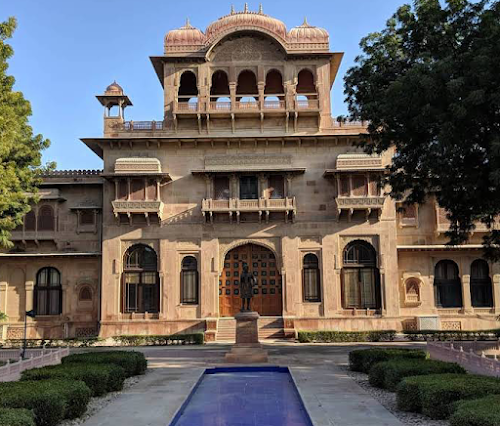
Discover Incredible Places in Bikaner
Explore our handpicked collection of breathtaking destinations across India
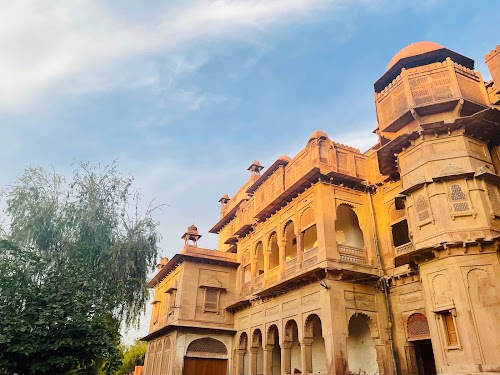
Junagarh Fort
Junagarh Fort, an architectural marvel in Bikaner, Rajasthan, stands as a testament to Rajputana grandeur. Unlike other forts in Rajasthan, it's not situated on a hilltop but on level ground, surrounded by a formidable stone wall. Within its imposing walls, a complex of palaces, temples, and pavilions showcases intricate carvings, delicate latticework (jali), and vibrant frescoes. The fort's museums house a rich collection of artifacts, including royal costumes, weaponry, and palanquins, offering a glimpse into the opulent lifestyle of the erstwhile rulers. The palaces like Anup Mahal, Phool Mahal, and Chandra Mahal are particularly noteworthy for their exquisite interiors and stunning artwork.
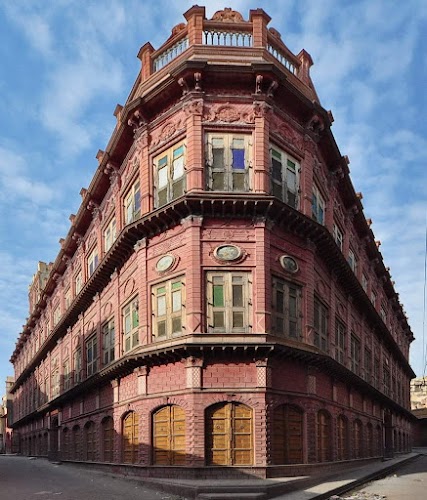
Rampuria Havelis
Rampuria Havelis, a cluster of exquisitely carved mansions in Bikaner, Rajasthan, are a testament to the opulent lifestyle of wealthy merchants. These havelis, built between the 15th and 19th centuries, showcase intricate carvings in red and yellow sandstone, depicting a fusion of Rajput, Mughal, and Victorian architectural styles. The ornate facades, jharokhas (overhanging balconies), and delicate filigree work are a visual treat. Visitors can explore some of the havelis, marveling at the frescoes, courtyards, and the grandeur of a bygone era. Some havelis have been converted into heritage hotels, offering a unique stay experience.
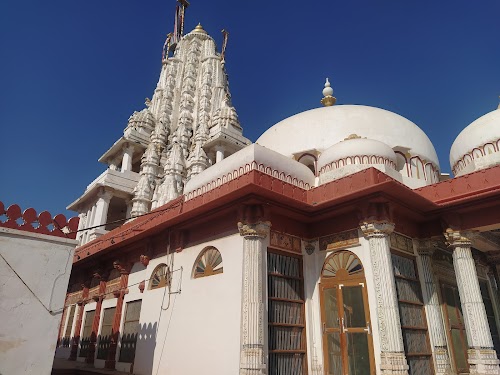
Seth Bhandashah Jain Temple
The Bhandasar Jain Temple, dedicated to Sumatinath Ji, the fifth Jain Tirthankara, is a magnificent structure renowned for its intricate carvings, vibrant frescoes, and rich history. Located within the walled city of Bikaner, the temple's three-storied structure is adorned with elaborate mirror work, gold leaf paintings, and detailed depictions of Jain mythology. The ornate interiors create a mesmerizing atmosphere, while the peaceful courtyard offers a serene escape from the bustling city. Visitors can marvel at the exquisite craftsmanship and learn about Jain philosophy and traditions. The temple's stunning architecture and spiritual significance make it a must-visit destination in Bikaner.
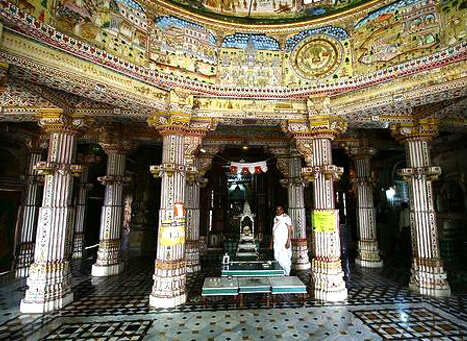
Shri Laxminath Temple
Shri Laxminath Temple, a revered Hindu temple in Bikaner, is dedicated to Lord Vishnu and Goddess Lakshmi. Known for its exquisite architecture and intricate carvings, the temple showcases a blend of Rajput and Mughal styles. The main deities, Vishnu and Lakshmi, are enshrined in the inner sanctum, adorned with gold and silver ornaments. The temple complex also houses smaller shrines dedicated to other deities. Devotees and tourists alike visit to admire the temple's beauty and experience its spiritual aura. The temple's peaceful atmosphere offers a respite from the bustling city.
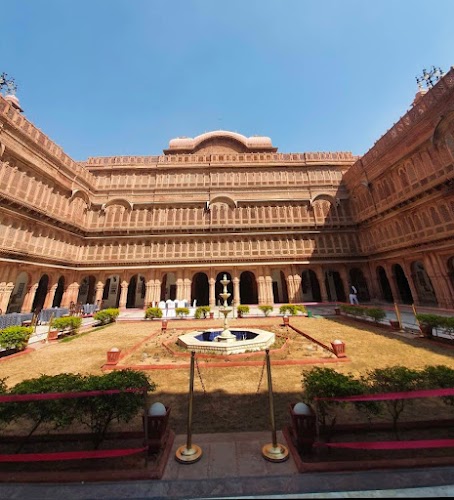
Lalgarh Palace
Lalgarh Palace is a magnificent red sandstone edifice in Bikaner, Rajasthan. A blend of Rajput, Mughal, and European architectural styles, it boasts intricate carvings, expansive courtyards, and lavish interiors. Visitors can explore the grand halls, opulent rooms, and the impressive collection of artifacts and paintings housed within the palace museum. The palace also features beautiful gardens, providing a tranquil escape. A stay at the luxurious heritage hotel within the palace offers a royal experience.
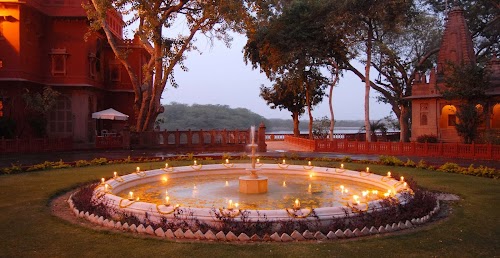
Gajner Palace
Gajner Palace, a captivating jewel in Bikaner's crown, offers a unique blend of history, nature, and Rajputana grandeur. Once a hunting lodge for the Maharaja of Bikaner, this lakeside palace is now a heritage hotel. Surrounded by lush greenery and the tranquil Gajner Lake, it provides a serene escape. Visitors can explore the intricately carved sandstone architecture, reminiscent of the region's rich heritage. The palace boasts opulent interiors, including period furniture and exquisite artwork. The sanctuary surrounding the lake attracts a variety of migratory birds, making it a haven for birdwatchers. Boating on the lake is a popular activity, offering stunning views of the palace and the surrounding landscape. Gajner Palace provides a glimpse into a bygone era of royal luxury and natural beauty.

Kolayat Ji Temple
Kolayat Ji Temple, located near Bikaner, Rajasthan, is a revered pilgrimage site for Hindus. Dedicated to Kapil Muni, a prominent sage in Hindu mythology, the temple is situated beside a sacred lake believed to have healing powers. The serene atmosphere, coupled with the intricate architecture of the temple, makes it a captivating destination. Devotees come to take a holy dip in the lake and offer prayers at the temple. The annual Kapil Muni Fair, held during Kartik Purnima, attracts a large number of pilgrims and is a vibrant spectacle of faith and tradition.
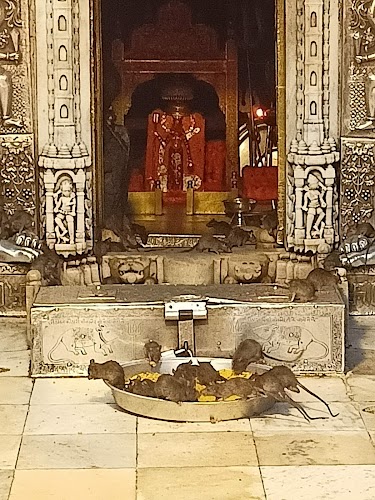
Karni Mata Temple, Deshnoke
The Karni Mata Temple in Deshnoke, near Bikaner, is a unique and fascinating Hindu temple famous for its large population of rats, known as 'kabbas' or 'little children'. These rats are considered sacred and are believed to be reincarnations of Karni Mata and her followers. Visitors come from around the world to witness this unusual sight and receive blessings. Seeing a white rat is considered particularly auspicious. The temple is beautifully adorned with marble carvings and silver gates, creating a visually stunning backdrop for this unusual spiritual experience. Remember to remove your shoes before entering and be mindful of the rats.
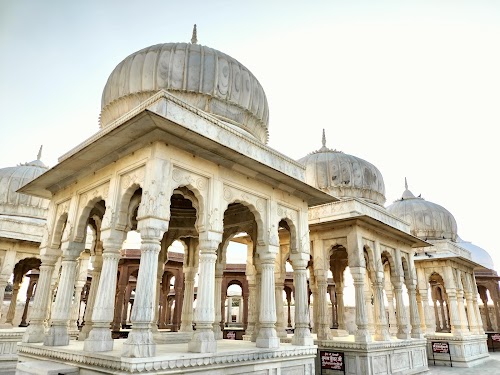
Devi Kund Sagar
Devi Kund Sagar, also known as the Royal Cenotaphs, is a serene and historically significant site located near Bikaner. It showcases a collection of intricately carved cenotaphs (chhatris) dedicated to past rulers of the Bikaner royal family. These ornate structures, built from white marble and sandstone, display exquisite craftsmanship and Rajput architectural styles. The cenotaphs vary in size and design, reflecting the stature and era of the ruler they commemorate. The peaceful atmosphere and the detailed artistry make Devi Kund Sagar a captivating destination for history buffs, architecture enthusiasts, and anyone seeking a glimpse into Bikaner's royal heritage.